First look: Cane Creek’s new Inline trail bike shock
Originally posted on May 20, 2014 at 17:18 pm
When Cane Creek first invited us to a media event to unveil a new product, it was going to take place out in California, during the crazy time that is the Sea Otter Classic. I was relieved when it was postponed and moved to Cane Creek’s home-turf in North Carolina. Not only would it be one less thing to try to cover at Sea Otter, but I’ll take a ride in the Pisgah National Forest over any trail around the Laguna Seca racetrack. So, I happily made the drive south from Dirt Rag HQ to check out the new Inline shock, tour Cane Creek’s facilities, and ride some bikes at both Pisgah and Dupont forests.
But this isn’t about me, it is about this new shock.
Cane Creek has a long history but the Aheadset patent (and licensing it to other manufactures) was big part its business. As that patent’s life was winding down, and headset business in general moving away from headsets being focal point of a bike build, Cane Creek needed to diversify its product offerings. The Thudbuster suspension seat post can’t carry the whole company.
While Cane Creek had been in the rear shock business for quite a while, (remember the air sprung and air damped Cloud 9?), it wasn’t until the Double Barrel Coil hit the market that Cane Creek really became a player in the suspension market.
The coil shock was soon followed by the DB Air, which made inroads into the trail bike market. Those trail riders wanted the ability to dial in some pedaling, and Cane Creek responded with the DB Air CS (Climb Switch), perhaps the first rear shock to adjust both low speed compression and rebound damping to create a very “quiet” rear suspension for climbing.
The main problem with the DB Air CS? The piggyback reservoir prevents fitment on many trail bikes. Enter the DB Inline.

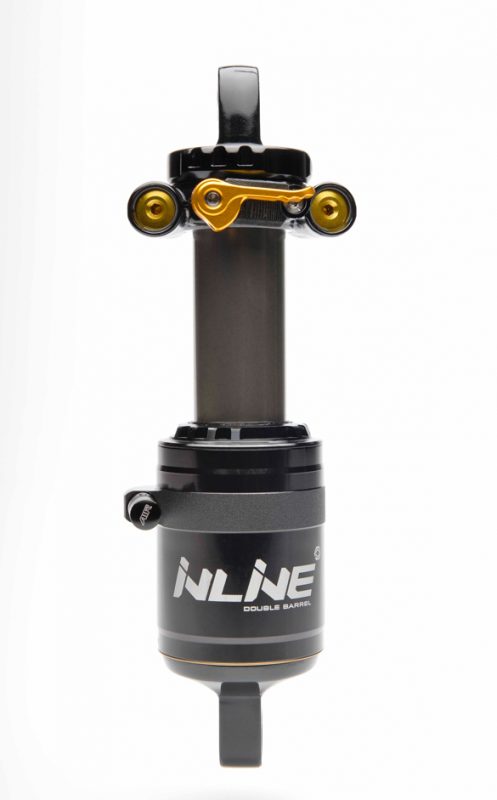
The Inline retains the four way adjustability of the other DB shocks, but loses the piggy back. That means the shock will fit the large majority of 120mm-150mm trail bikes on the market, including the oddball lengths, travels, and wishbone mounts used by Specialized.

The key to the system is large damping “collar” at the opposite end of the shock from the air can. The damping all takes place inside this collar, instead of the standard ports in the oil piston itself. In the Inline the piston is solid, pushing the oil up through the ports in the compression stroke, and down through the ports in rebound. This is possible with the twin tube construction of the shock. This is best explained with the image below.
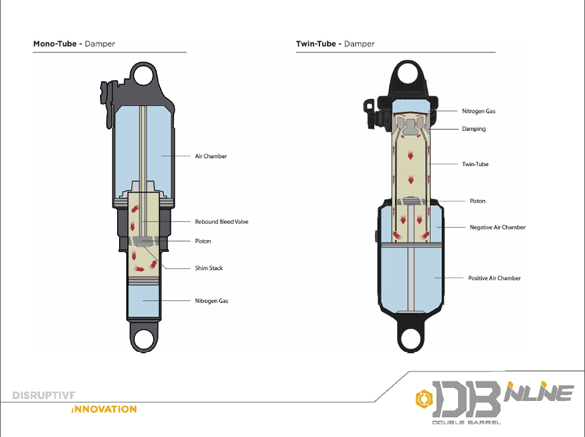
Beside making it much easier to make the external adjusters for all the damping, it also keeps the damper from being covered by the insulating jacket of the air can. Combine that with 37-48 percent more damper oil volume than the other major brands and you have a shock that is going to remain more consistent, even after long rough down hills that have most shocks begging for mercy.
The air can will come in one size, with air volume adjusters included with all aftermarket shocks. Changing the volume is a simple task, even trail-side. Pop off a big c-clip with your fingers, slide the air can back, slip the waffle-like spacers into the can, slide the can back on, install the c-clip, go ride. It takes less than a minute for most people—great for checking different progression rates on the trail.
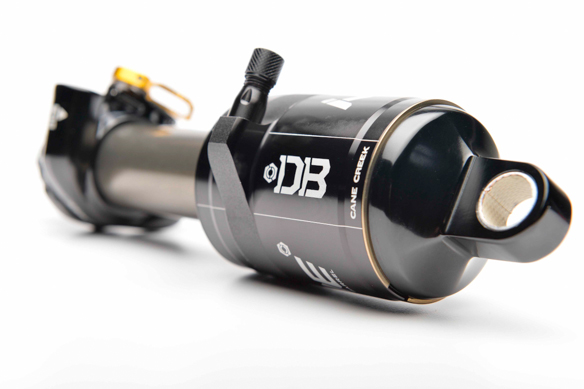
Damping adjustment is now done with a 3mm allen key—no more proprietary wrench. Knobs were talked about, but in the end Cane Creek thinks the act of stopping and getting out a tool will put riders in a “tuning” mindset, and more care will be paid to what is being done, rather than just spinning knobs. Not sure if I completely agree with this, as some riders might be more apt to not make the adjustment at all if a tool needs to be dug out of a bag, but maybe those riders shouldn’t be riding this shock anyway….
The Climb Switch is preset at the factory, and will have detents at either end. There seems to be some internal debate over whether to advertise the fact that the Climb Switch is progressive throughout the range of travel. So while the intent is to have the CS be used as an on-off switch, leaving it somewhere in the middle allows for some fine tuning between the two extremes.
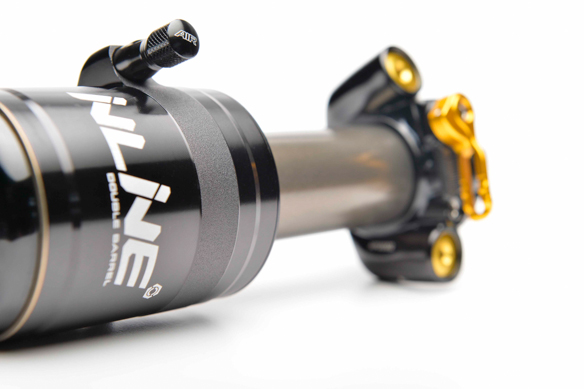
As stated earlier, the Climb Switch deals in low speed compression and rebound damping. I’ve personally noticed that most rear shocks with just low speed compression lever adjustment have a tendency to get bouncy when tackling rough terrain while climbing. The Inline keep things very much in the pocket over all kinds of terrain going up, even after I got tired and lost most of my climbing form.
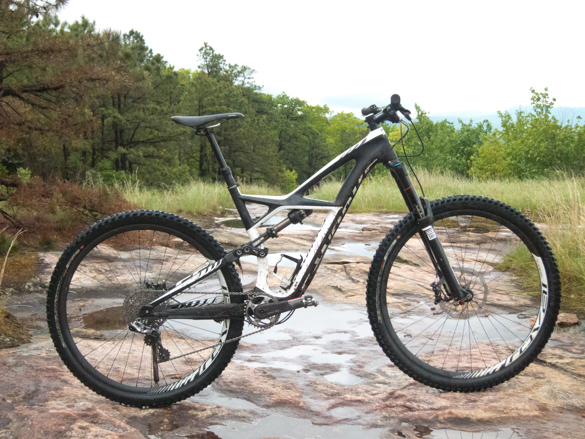
But rear suspension is really not about going up, at least not for me. It is about the descent. Even with too little air in the can for the first ride, the Specialized Enduro 29 I was riding felt great, but bottomed too easily. A few more PSI, a little less low speed rebound, and things were awesome. The trails in Pisgah are a wonderful place to test suspension, with long descents full of rocks, roots, kickers and drops. I was very impressed with the Inline’s performance, but obviously, two days of riding, no matter how awesome the trail, isn’t going to be enough to really dial in the shock. We hope to remedy that soon with a long term review.
This is not a shock for everyone. Riders looking to spend little time dialing in suspension are better off on the simpler offerings from Fox and Rock Shox. Have so many ways to adjust suspension can be daunting, but Cane Creek offers a basic tuning guide with the shock, a “base line” setting for many suspension systems, and an online forum, the Lounge, where riders can share tuning tips.
The Inline will be available around June 16 for $495. Not bad for such a complex, American-made product.
Product specs
Weight: 295 grams (165 x 38mm no hardware)
Damping: Twin-tube independent compression and rebound in
two high-speed and four low-speed damping circuits
Adjustments: Four-way independent adjustment:
- High-speed compression
- Low-speed compression
- High-speed rebound
- Low-speed rebound
- Climb Switch On/Off
Finish: Anodized and laser-etched
Lengths:
- 165 x 38mm (6.5” x 1.5”)
- 184 x 44mm (7.25” x 1.73”)
- 190 x 50mm (7.48” x 1.96”)
- 200 x 50mm (7.87” x 1.96”)
- 200 x 57mm (7.87” x 2.24”)
- 216 x 63mm (8.5” x 2.48”)
Can sizes: Standard (all lengths)
Mounting interface: High performance low friction bushing 1/2” universal axle
Correction
An earlier version of this article incorrectly referred to Pisgah as a state forest.